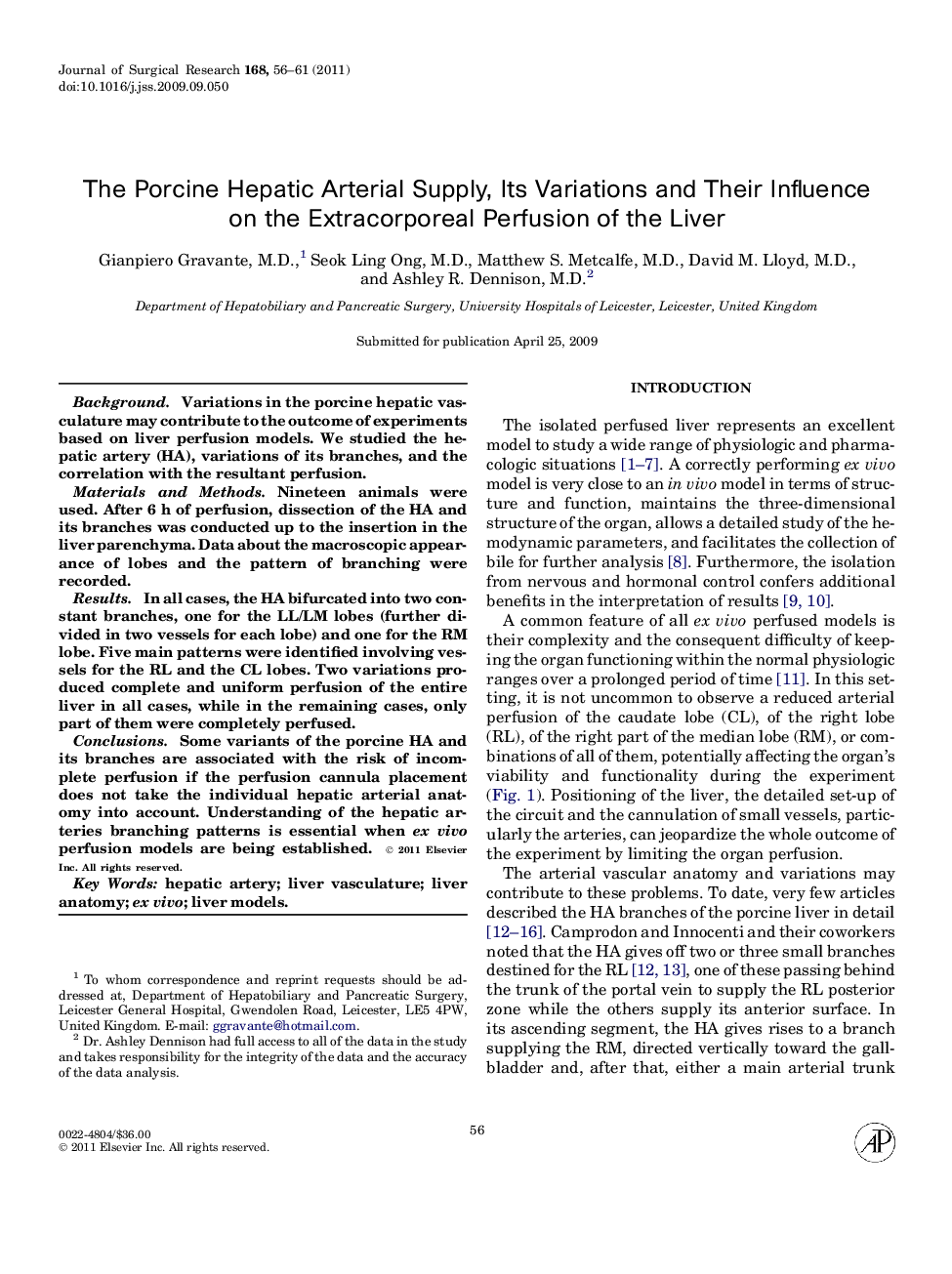| Article ID | Journal | Published Year | Pages | File Type |
|---|---|---|---|---|
| 4302183 | Journal of Surgical Research | 2011 | 6 Pages |
BackgroundVariations in the porcine hepatic vasculature may contribute to the outcome of experiments based on liver perfusion models. We studied the hepatic artery (HA), variations of its branches, and the correlation with the resultant perfusion.Materials and MethodsNineteen animals were used. After 6 h of perfusion, dissection of the HA and its branches was conducted up to the insertion in the liver parenchyma. Data about the macroscopic appearance of lobes and the pattern of branching were recorded.ResultsIn all cases, the HA bifurcated into two constant branches, one for the LL/LM lobes (further divided in two vessels for each lobe) and one for the RM lobe. Five main patterns were identified involving vessels for the RL and the CL lobes. Two variations produced complete and uniform perfusion of the entire liver in all cases, while in the remaining cases, only part of them were completely perfused.ConclusionsSome variants of the porcine HA and its branches are associated with the risk of incomplete perfusion if the perfusion cannula placement does not take the individual hepatic arterial anatomy into account. Understanding of the hepatic arteries branching patterns is essential when ex vivo perfusion models are being established.
